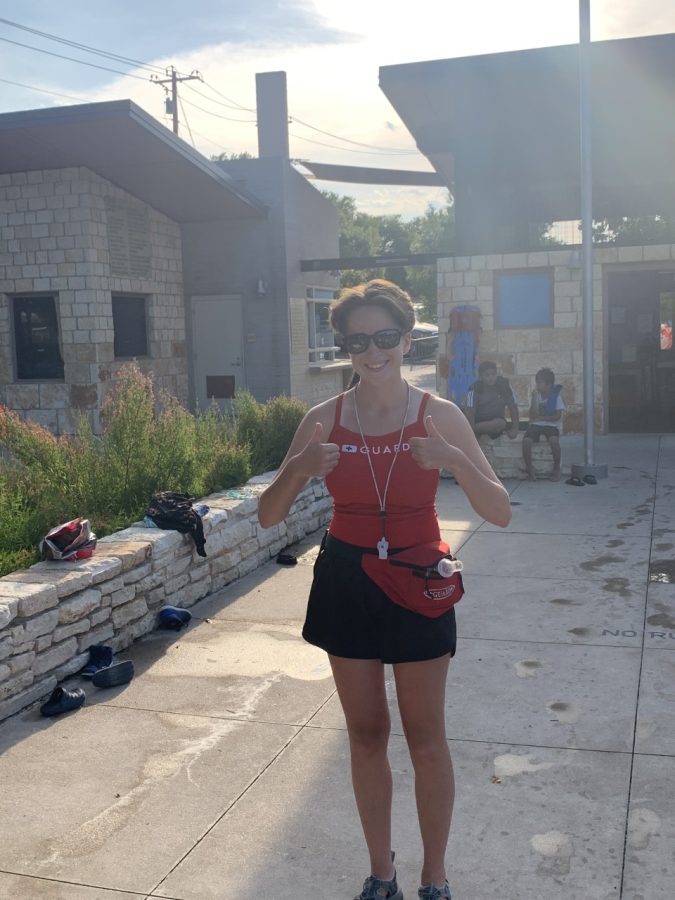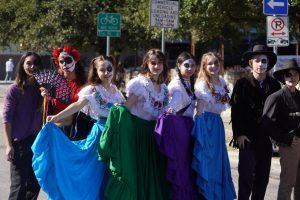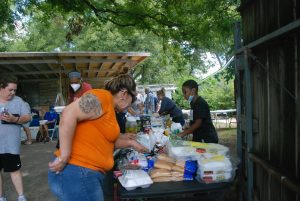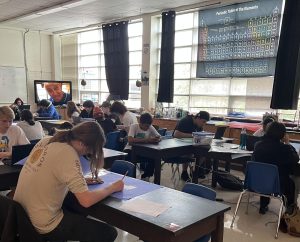The bilingual benefit
Bilingual students successful in work, forming connections
Senior Eric Thatcher poses with a friend. Thatcher, who has been involved with AISD Dual Language programs since kindergarten, uses Spanish for his job as a landscaper.
January 11, 2023
Almost all of us know someone bilingual. Whether you speak Spanish with friends or Japanese in class, knowing two or more languages is rapidly becoming the norm. Here at McCallum a significant number of students speak Spanish as well as English and use their bilingual education at work, with their peers and in their extracurricular activities. According to Mr. Featherstone, there are 23 languages spoken at McCallum.
A second language can be especially helpful when entering the workforce, something many McCallum students can attest to. According to the Financial Post, studies show that people who speak more than one language can earn 5-20% more than monolingual employees.
Austin has a big population of Spanish speakers, resulting in a higher demand for bilingual workers. Senior Eric Thatcher, who has been a part of AISD’s bilingual program since kindergarten, uses his knowledge when working as a landscaper.
“The ability to speak Spanish is very useful in the workplace,” Thatcher said. “When I work with welders during my work, many of them don’t speak English, so being able to talk to them is vital.”
Senior Kate Boyle worked as a lifeguard and swim instructor over the summer. She frequently used her second language Spanish when communicating with Spanish-speaking patrons.
“I found myself yelling ‘no running’ and ‘no corran’ together,” Boyle said.
Boyle also recognizes the benefits of knowing multiple languages for safety.
“I think it’s important that swimming is bridged across all languages because, at least to me, it’s a life skill and I wouldn’t want anyone to not be able to learn to swim because of a language barrier,” Boyle said.

At school, many bilingual students have found ways to use their Spanish in their extracurricular activities. Junior Bella Gonzales is in PALS, a program that focuses on leadership and volunteering. She visits Spanish-speaking fourth-grade students each week. She appreciates that PALS gives her an opportunity to speak Spanish more often.
“I’m excited to talk to kids who are still learning English and help them with that process,” Gonzales said.
Another PAL, junior Chris Ferina also uses his second language when visiting students. He speaks on what Spanish gave him.
“It gave me new opportunities to help people and offer abilities to their communities,” Ferina said.
Ferina noticed that when he spoke Spanish with his friends they felt more comfortable and could form a better connection.
In this rapidly evolving world, bilingual education is consistently proving itself to be a useful tool. McCallum students use several languages in their lives every day. This has allowed them to expand the scope of their communication skills and opportunities.







